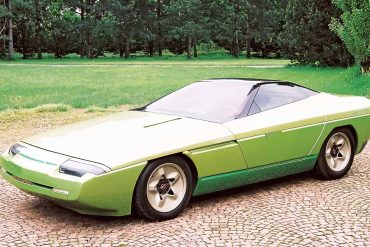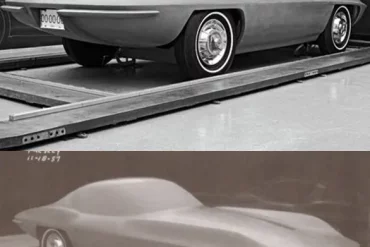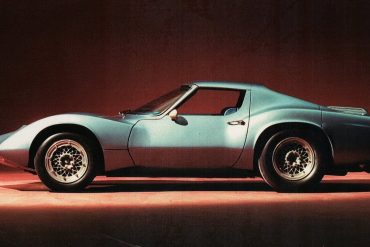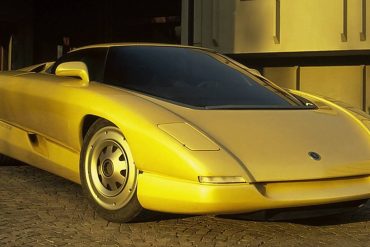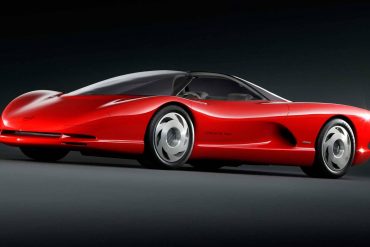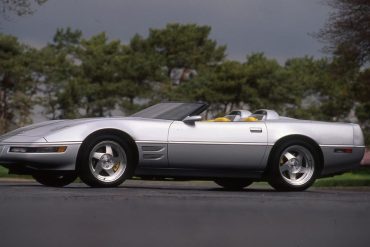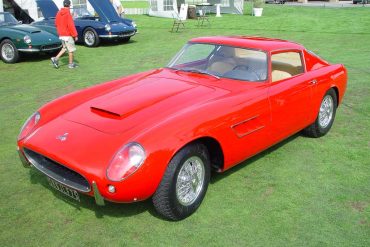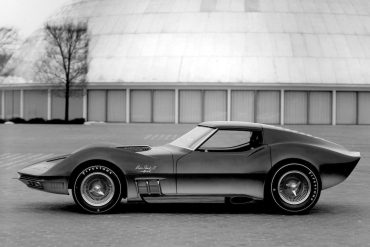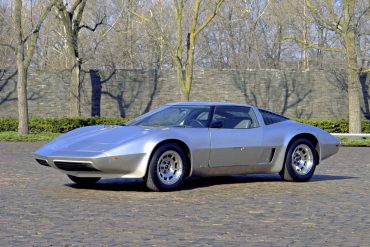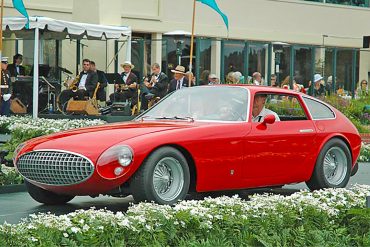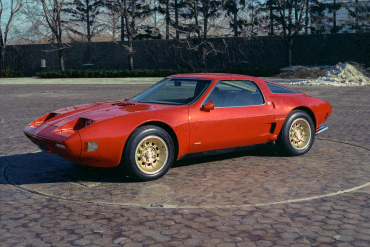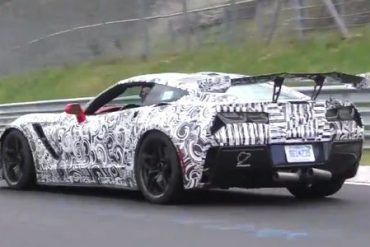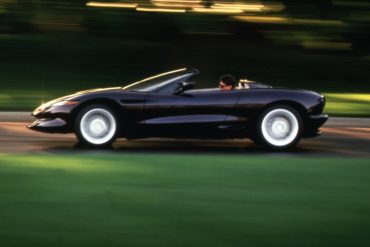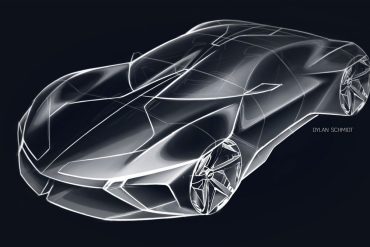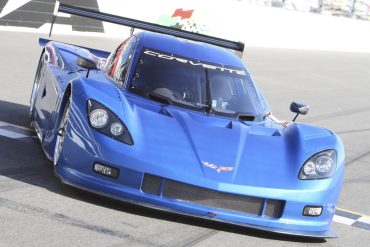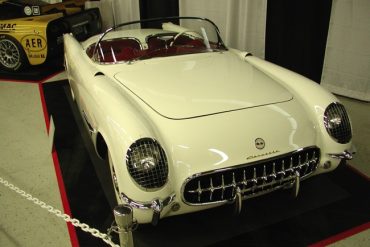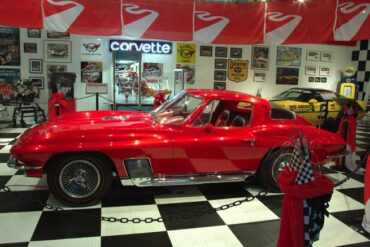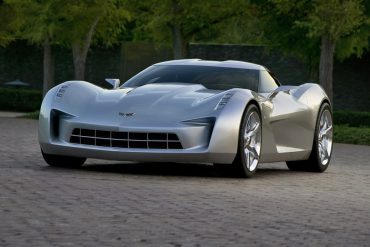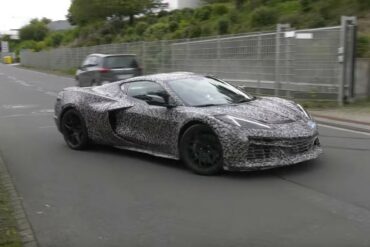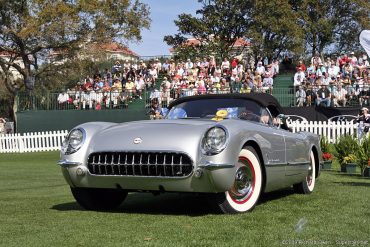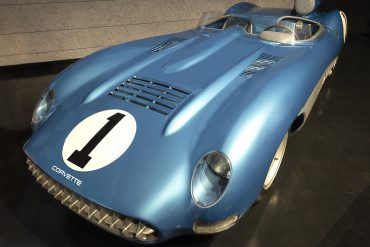In 1983, Bertone began to explore the possibility of approaching the US market with the Ramarro, an exercise in applied technology around mass-produced mechanics. The Ramarro, which means "green lizard" in Italian, was created on the chassis of the well-known Chevrolet Corvette, and the underlying concept aimed to modify the layout of the mechanical components.
Duntov laid out three design concepts that took decades to implement. The first was his proposal for the 1957 Q-Corvette. This design called for the following: an all-aluminum, fuel-injected small-block engine, four-wheel independent suspension, four-wheel disc brakes, and a transaxle. This design concept arrived in 1997 as the C5.
The XP-819, developed in the mid-1960s, was an engineering exercise to test a rear engine concept for the Corvette. The body was designed by Larry Shinoda. You can see styling cues in XP-819 that later appeared in Shinoda's famed "Sting Ray" design. A GM marine engine powers the car so the two-speed transaxle would operate properly. The entire chassis, suspension, and steering are custom made components unique to this car.
The Nivola may be considered Bertone’s homage to the most fascinating American sports car: the Chevrolet Corvette. The sophisticated mechanical unit of the ZR-1 was interpreted by Bertone in a European key. Bertone designed a special chassis to make a sporty "boat" with a mid engine. This mechanical layout made it possible to exploit all the power of the engine when accelerating and warrant perfect roadholding on bends.
Mid-Engine Prototypes: The 1985 Corvette Indy Concept, The 1986 Corvette Indy and the 1990 CERV III Since the introduction of...
Chevrolet Corvette ZR-1 Spyder prototype, 1991, by ASC. An experimental styling prototype ordered by Don Runkle, Chevrolet’s chief engineer, to see how far the ZR-1 might be pushed in convertible form. The windshield was chopped in half and the seats were mounted directly to the floorpan. The black example in the National Corvette Museum was originally painted Sebring Silver with a Neutrino Yellow interior.
When the crankshaft broke on Gary Laughlin’s Ferrari Monza he had had enough. Being the owner of several Chevrolet dealers, he turned to Peter Coltrin to have a few rebodied. Fortunately, they pursued Sergio Scaglietti who made three fastback coupes on the Corvette chassis.
The Mako Shark II was a radical concept that shaped Stingray years later. While showcasing distinct design cues, the Mako Shark contained many notable features for 1965. It had a one-piece front-end that hinged forward for access to the engine bay, a removable hardtop, knock-off aluminum wheels and a big-block 427. Chevrolet received overwhelming requests to have it produced.
One of the most beautiful concept cars created by GM was the XP-822 later called the Aerovette. Zora Arkus Duntov and his engineers had originally built two predecessors during 1969. John DeLorean, Chevrolet's general manager, felt the program was too expensive and canceled the car.
This one-off 1961 Vignale Corvette was built for the 1961 Salon de l'Automobile in Paris, France. It was based on a 1960 Corvette chassis and built by Italian coachmaker Carrozzeria Vignale. The body was designed by Gordon Kelly.
This little concept mounted a 180-horse Wankel transversely, driving a new automatic transaxle being developed for the forthcoming X-body Citation. Designed by GM's Experimental Studio and built in 6 months on a modified Porsche 914 chassis by Pininfarina, the 2-Rotor made its debut at the 1973 Frankfurt show.
Spy Photos Reveal Clues About the Next ZR1 Corvette Since the introduction of the C7 Stingray in 2014, Corvette enthusiasts...
The 1992 Stingray III / California Stingray Concept was developed by John Schinella (and team) at GM's Advance Concept Center in Los Angeles. The 1992 concept is a world away from the C4. But the dominant motifs of a smooth rounded Corvette did come to production on the C5. This prototype looks distinctly upmarket, the rear shares a shocking similarity to the Jaguar XK8, without a flat surface in sight.
Could This be the Hybrid? Over the holiday weekend, GM was apparently out testing a new version of the C8...
Nothing seems to generate more buzz (and angst) among Corvette enthusiasts than speculation about what the next generation will look...
For the 2012 Grand-Am season, Chevrolet was the first to unveil it's new DPG3 bodywork. This Corvette body kit will be built by Pratt & Miller and will be sold to customer teams. These body kits will fit on any existing Coyote, Riley, or Dallara chassis. This Corvette DP will be powered by a 5.0L V8 making 530BHP @ 7,000rpms and 450ft-lbs at 5,500rpms.
Based on Harley Earl’s Project Opel plaster model, the EX52 / 122 was the original concept car that inspired the nation and left countless consumers wanting a Corvette to call their own. This Corvette concept was introduced at GM’s Motorama in January 1953.
For the 1964 New York World's Fair, Bill Mitchell and his Styling team at the Tech Center customized a production Sting Ray under Shop Order #10361 with a variety of items that transformed the already impressive Corvette into a showpiece like no other. An opening was cut into the center of the car's hood exposing a polished fuel injection manifold with the Corvette crossed flags in its very center.
SIDESWIPE takes the form of a sleek, vision concept dreamed up by the Corvette designers at GM. The design is influenced by the original Stingray race car, introduced in 1959, but also draws on Corvette heritage cues from other generations. It brings them together in a futuristic shape that seems to be equal parts racecar and space ship.
Rumors regarding the Corvette E-Ray has been around for a very long time. As early as 2015, it has been...
The 1954 Corvette was outfitted with several unique design features. These were the results of two design exercises that included both interior and exterior upgrades. Outwardly, this styling concept is distinguished by its sharkfin headlights which effectively split each headlight down the center.
To commemorate the launch of the definitive book on "Corvette Concept Cars," we proudly present our picks of the ten greatest Corvette concepts of all time!
No More Content


